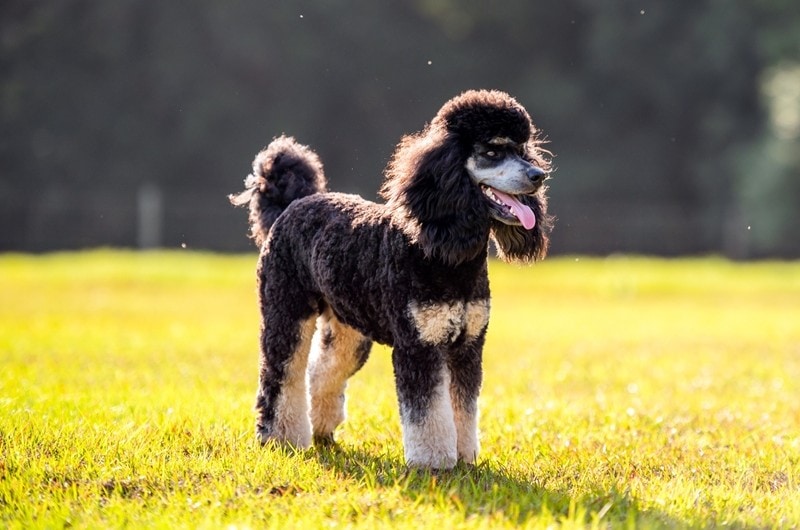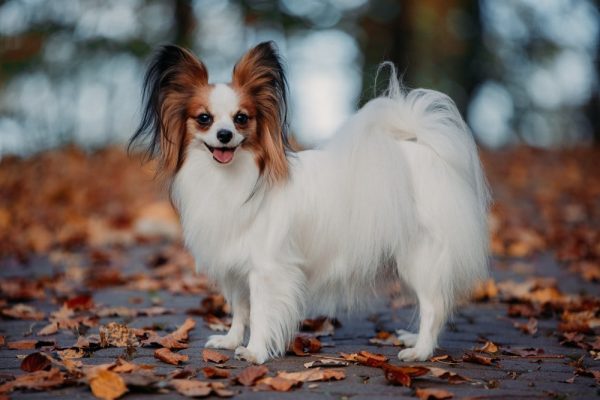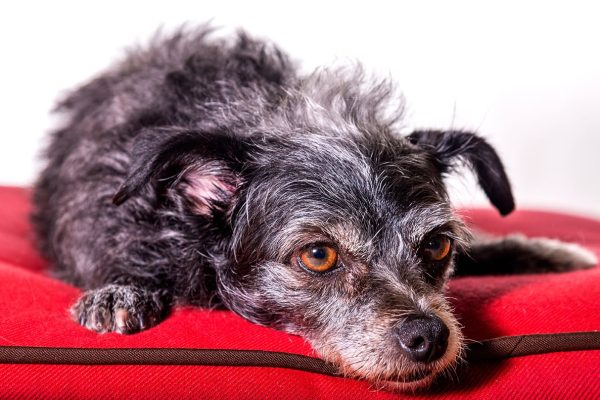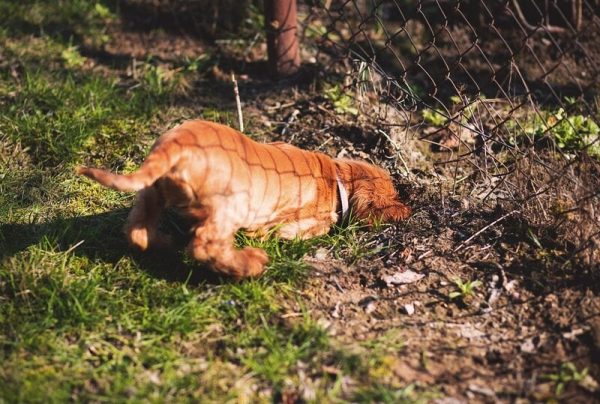When you think of Poodles, do you imagine Paris and the Eiffel Tower? If you do, you’re not too far off. Poodles are the national dog of France and come in all kinds of colors and patterns. In this post, we’re sharing what makes a Phantom Poodle unique and a little about its history.
Breed Overview
Height:
15–24 inches
Weight:
40–70 pounds
Lifespan:
12–15 years
Colors:
Apricot, brown, white, gray, black, cream, fawn
Suitable for:
New dog owners, families with older kids, people with allergies
Temperament:
Intelligent, active, friendly, mischievous
Phantom Poodles have a single-colored coat with a secondary color. You’ll notice the coloring above the eyes, on the sides of the muzzle, across the chest and legs, and under the tail. If your Poodle has this type of coat coloring, it’s probably a Phantom Poodle.
Besides this coat coloring, a Phantom Poodle isn’t a different type of Poodle. They have the same origin backstory as any other poodle. Speaking of, let’s find out more about their past.
Standard Poodle Characteristics

The Earliest Records of the Phantom Poodle in History
Although Poodles are associated with France, the breed originated in Germany about 400 years ago at the tail-end of the Middle Ages and into the Renaissance period.
The name “Poodle” stems from the German word “pudelin,” which means “to splash.” These dogs served as water retrievers because of their dense coats and high intelligence. The poodle clip wasn’t a decorative choice. Instead, hunters had their poodles trimmed this way so their fur would protect their joints and organs in cold water while still giving them the freedom to move about in the water.
It’s unclear where these dogs were bred in Germany, but the famous Dutch painter Rembrandt (1606–1669) featured a Poodle in one of his self-portraits.
How the Phantom Poodle Gained Popularity
It’s unclear how or when the breed made its way to France, but it’s believed that German troops brought the breed into the country. Eventually, the standard and miniature Poodles gained popularity with French nobles.
Louis XIV of France (1638–1715) loved his Poodles and pampered them to their hearts’ content. Everyone else in France fell in love with the breed shortly after. Because of their superior intelligence, the circus used Poodles in their acts as entertainment. Hunters even used Poodles to find truffles.
Poodles were eventually bred down to miniature size and brought to America in the late 17th century. The breed didn’t gain popularity in America until 1931 when American breeders created the toy version.
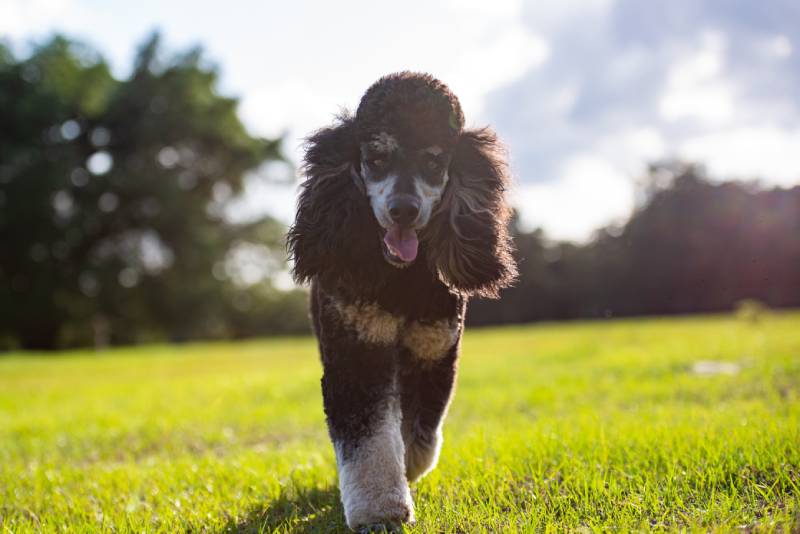
Formal Recognition of the Phantom Poodle
The American Kennel Club (AKC) recognized the Poodle breed in 1887. Almost 30 years later, the Poodle Club of America (PCA) was formed after the breed skyrocketed in popularity in 1931. The Poodle Club of America held its first specialty show the following year.
At this time, the AKC doesn’t allow the Phantom Poodle in confirmation events but allows participation in agility and obedience events.

Top 3 Unique Facts About the Phantom Poodle
1. Several Famous Americans Have Kept Poodles
When a dog breed becomes popular, you’re bound to find some celebrities owning the breed. Famous Americans like Elvis, Jackie Kennedy, Lucille Ball, Elizabeth Taylor, Marilyn Monroe, Walt Disney, and Katherine Hepburn owned poodles. However, it doesn’t look like any of them had Phantom Poodles.
2. A Group of Poodles Competed in the Iditarod
Only snow dogs like Huskies compete in the Iditarod, a long-distance sled dog race, because of the harsh Alaskan cold. This rule was adopted after a man named John Suter used Poodles in the race. The dogs were so cold that their feet were frozen and their hair was severely matted. Safe to say, they didn’t finish the race.
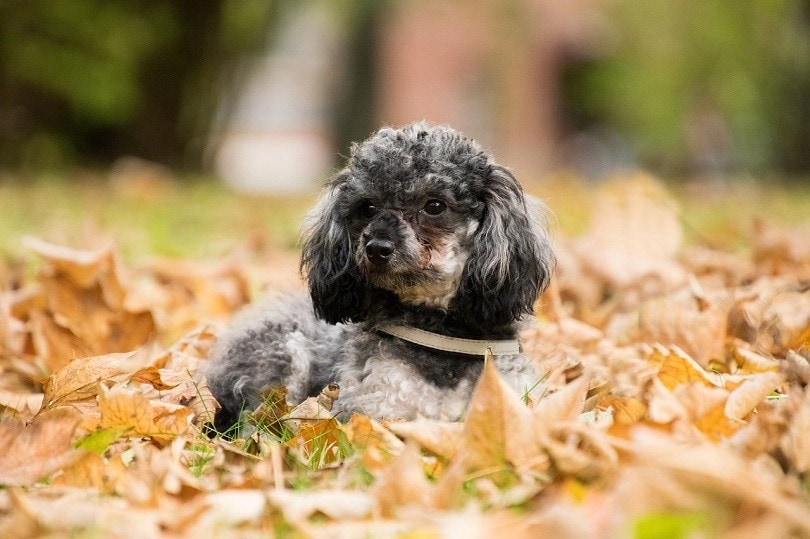
3. In France Poodles Are Called Caniche
As we mentioned earlier, “Poodle” comes from the German word “Pudelin.” However, in France, Poodles go by the name “Caniche,” meaning “duck dog.”

Does the Phantom Poodle Make a Good Pet?
Poodles of any size and color, including the Phantom Poodle, make excellent pets. Although they work hard in the field, Poodles are highly affectionate, docile, and great with young children. They’re also eager to please and learn quickly. Good socialization early on will ensure your Poodle is okay with other dogs.
Poodles’ hunting background makes them highly adaptable and watchful. They will alert you when there’s stranger danger nearby. If the stranger checks out, Poodles will openly accept new people as friends.
A Poodle will fit nicely into your home if you provide solid mental stimulation and brush them daily. Because of their thick, hairy coats, Poodles hardly shed. However, you’ll have to brush your Poodle daily to prevent the fur from matting.

In Conclusion
We hope you learned something new about Poodles today. From Germany to France, Poodles quickly became one of the most popular dogs in the world.
Regardless of their size and color, Poodles are great dogs with a strong hunting background. The Phantom Poodle is one color of several colors you can choose. They’re not as popular as solid-colored Poodles, but they’re not impossible to find. Give this dog a good daily brushing and plenty of exercise, and you’ll have a friend for life.
Featured Image Credit: Tanya Consaul Photography, Shutterstock
